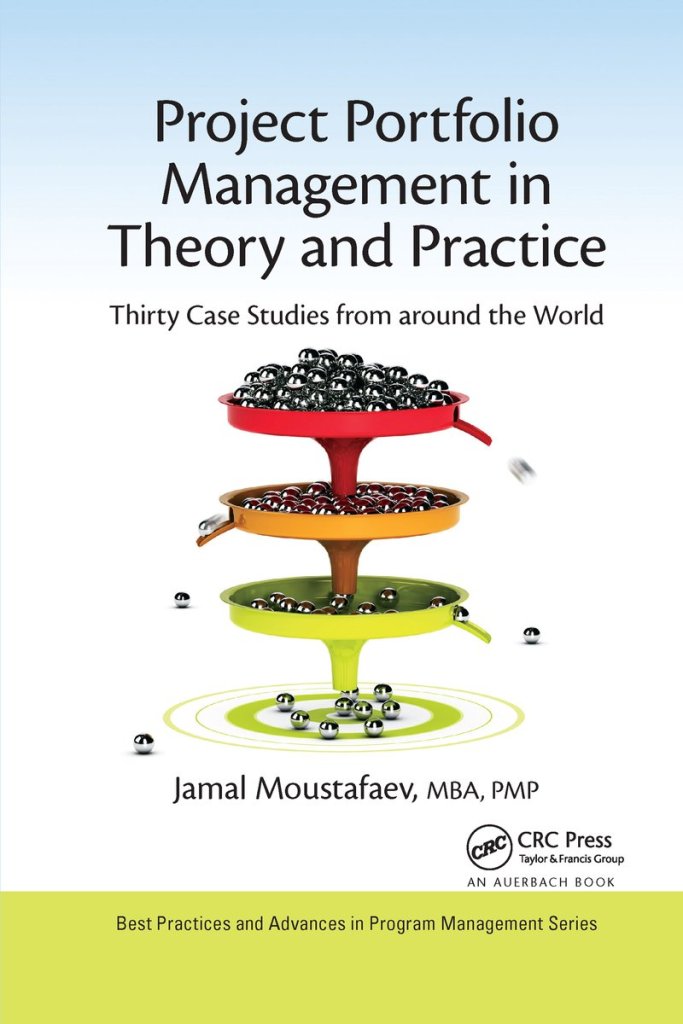
The book Project Portfolio Management in Theory and Practice – Thirty Case Studies from around the World by Jamal Moustafaev briefly explains project portfolio management by looking at the three pillars of project portfolio management:
- Project value. Projects selected must maximize the value for the company (Scoring matrix, e.g. strategic fit, resources required, technical feasibility, financial value, riskiness, joker project concept).
- Portfolio balance. Projects selected must constitute a balanced portfolio (e.g. value vs. risk).
- Strategic alignment. The final portfolio of projects must be strategically aligned with the company’s overall business strategy (top-down: product road map, strategic buckets model, bottom-up: individual departments generate initiatives, combined approach).
Case studies. The main part of the book is dedicated to 30 case studies. These case studies show how the three pillars of portfolio management – project value, portfolio balance and strategic alignment are integrated to maximize resource usage and overall portfolio value. The case studies are clustered around the following types of industry: pharmaceutical industry (3 cases), product development industry (7 cases), financial industry (4 cases), energy and logistics industry (5 cases), telecommunications industry (4 cases), Government and not-for-profit sector (4 cases), and professional services industry (3 cases).
The last part of the book concentrates on high level advice for implementing project portfolio management.
Conclusion. The offered portfolio management theory is very superficial. The 30 cases focus only on the three pillars – project value, portfolio balance and strategic alignment and are so anonymized that the 30 cases are very similar. I would have liked the cases to also show how the governance per case was set up, what is steered, how the process looks like, what’s the horizon of the portfolio plan. In the book I miss the steering on benefits or value. It seems that it is explicitly assumed that if the project is finished, the contribution to the strategic objectives will be realized, and that is questionable in many projects. I further miss a vision of the agility of the portfolio process itself. All the examples fall into the category of plan-based portfolio management, none move toward more discovery-based portfolio management. If you want to get a complete picture of theory and practice of project portfolio management, I can’t recommend this book.
To order Project Portfolio Management in Theory and Practice: managementboek, bol.















